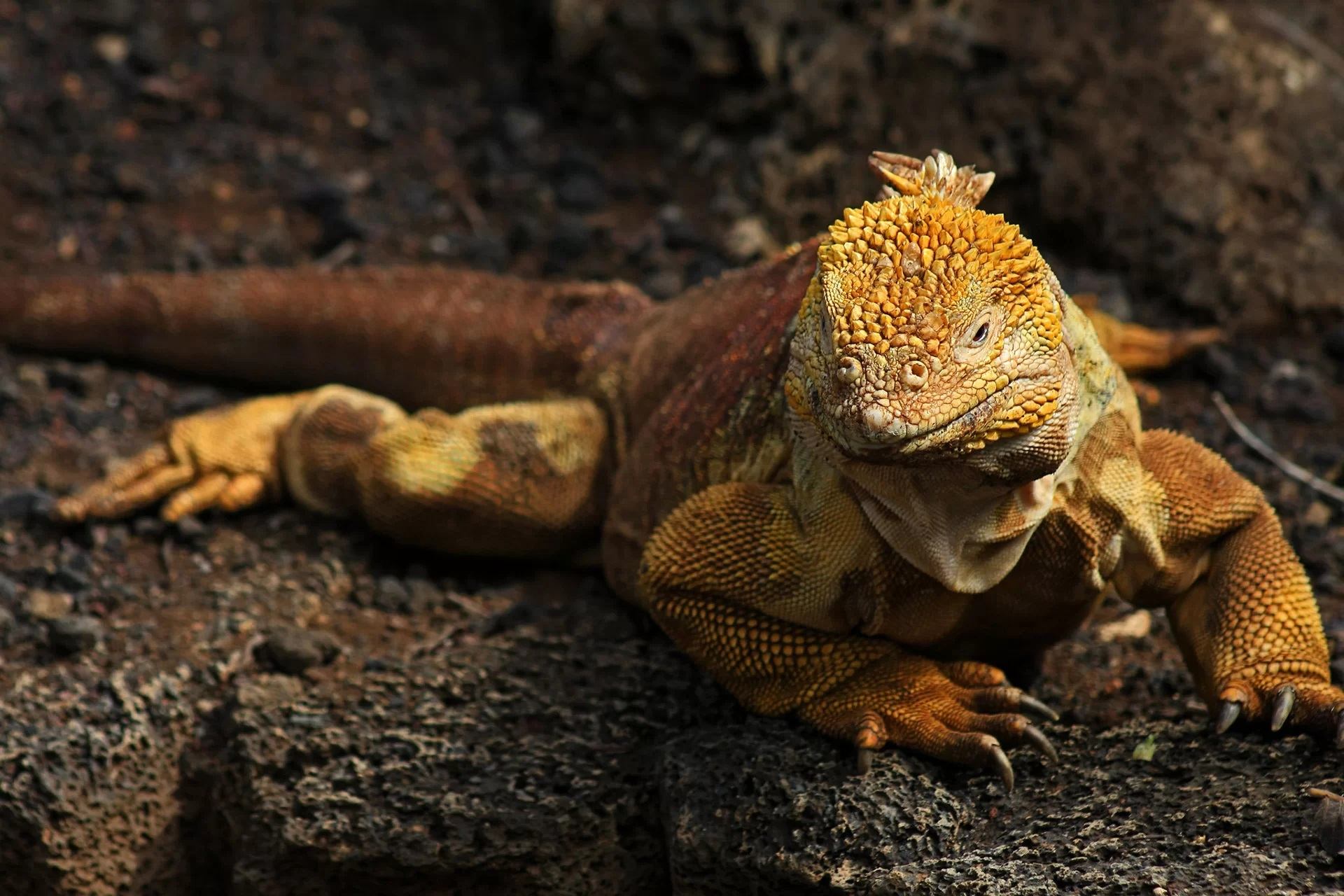
The Galapagos Islands are renowned for their unique and diverse wildlife, and one of the most fascinating creatures found here is the Galapagos Land Iguana. These ancient reptiles have captured the imagination of explorers and scientists alike for centuries. With their striking appearance and fascinating behavior, Galapagos Land Iguanas are true icons of the islands.
In this article, we will uncover 10 intriguing facts about Galapagos Land Iguanas that will shed light on their fascinating lives and adaptations. From their impressive size to their incredible survival strategies, these iguanas have evolved to thrive in this harsh and isolated environment. So, get ready to dive into the world of Galapagos Land Iguanas and discover the incredible secrets that make them so unique and wondrous.
Key Takeaways:
- The Galapagos Land Iguana is a unique and impressive reptile that can only be found on the Galapagos Islands, where it plays a crucial role in maintaining the balance of the ecosystem.
- With their impressive size, swimming abilities, and territorial behavior, Galapagos Land Iguanas are not only fascinating to observe but also essential for the survival of the Galapagos Islands’ ecosystem.
The Galapagos Land Iguana is endemic to the Galapagos Islands.
These unique reptiles can only be found on the Galapagos Islands, making them truly special and a remarkable sight for visitors.
They are the largest species of land iguana in the world.
The Galapagos Land Iguana can grow up to 1.5 meters in length and weigh up to 13 kilograms, making them impressive in size.
They have a lifespan of up to 60 years.
These fascinating creatures can live for several decades, with some individuals reaching the impressive age of 60 years.
Their diet mainly consists of cactus pads.
The Galapagos Land Iguanas have adapted to their environment and primarily feed on the nutrient-rich pads of cactus plants that are found on the islands.
They are excellent swimmers.
Despite being land-dwelling creatures, these iguanas have a surprising ability to swim. They use their strong tails to navigate through the water.
They have a unique yellowish coloration.
Their distinct yellowish color allows them to blend in with the volcanic rocks and sandy terrains of the Galapagos Islands.
Galapagos Land Iguanas are highly territorial.
They establish their own territories and defend them fiercely from other iguanas, often engaging in territorial disputes and aggressive displays.
They bask in the sun to regulate their body temperature.
These cold-blooded reptiles rely on sunlight to warm up their bodies, and they can often be seen sunbathing on rocks or on the sandy shores.
Galapagos Land Iguanas have a unique breeding behavior.
During the mating season, the dominant male iguanas perform elaborate courtship rituals to attract females, including head bobbing and tail waving.
They play a crucial role in the ecosystem.
As herbivores, Galapagos Land Iguanas help in seed dispersion and vegetation control, playing an important part in maintaining the balance of the ecosystem.
Conclusion
In conclusion, Galapagos Land Iguanas are fascinating creatures that have adapted to their unique environment in the Galapagos Islands. These remarkable reptiles are known for their impressive size, distinctive appearance, and intriguing behaviors. From their symbiotic relationship with cacti to their ability to withstand extreme temperature fluctuations, Galapagos Land Iguanas have proven to be resilient survivors.Their conservation status, once precarious, has improved thanks to ongoing efforts to protect their natural habitat and control introduced species. However, consistent monitoring and conservation measures are essential to ensure the long-term survival of these incredible creatures.Visiting the Galapagos Islands and witnessing these land iguanas in their natural habitat is a truly unforgettable experience. As we continue to learn more about them, it is our responsibility to appreciate and protect these unique species for future generations to enjoy.
FAQs
1. How big do Galapagos Land Iguanas get?
Galapagos Land Iguanas are one of the largest species of iguanas in the world, with males reaching lengths of up to 4 feet and weighing over 20 pounds.
2. What do Galapagos Land Iguanas eat?
These iguanas are herbivores, primarily feeding on the pads and fruit of cacti. This diet is important for their survival in the arid environment of the Galapagos Islands.
3. Are Galapagos Land Iguanas endangered?
While they used to be critically endangered, conservation efforts have helped stabilize their populations. However, they are still considered vulnerable due to habitat loss and predation by invasive species.
4. How do Galapagos Land Iguanas regulate their body temperature?
They are ectothermic reptiles, meaning they rely on external sources of heat to regulate their body temperature. They often bask in the sun or seek shade to maintain their preferred body temperature.
5. Can you touch Galapagos Land Iguanas?
No, it is strictly prohibited to touch or disturb Galapagos Land Iguanas. It is important to respect their natural behaviors and keep a safe distance to ensure their well-being.
Was this page helpful?
Our commitment to delivering trustworthy and engaging content is at the heart of what we do. Each fact on our site is contributed by real users like you, bringing a wealth of diverse insights and information. To ensure the highest standards of accuracy and reliability, our dedicated editors meticulously review each submission. This process guarantees that the facts we share are not only fascinating but also credible. Trust in our commitment to quality and authenticity as you explore and learn with us.
